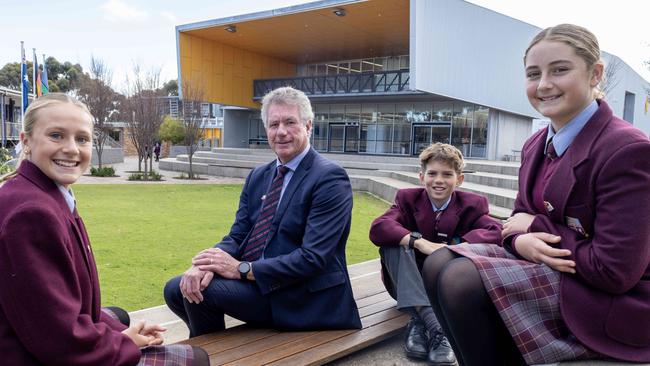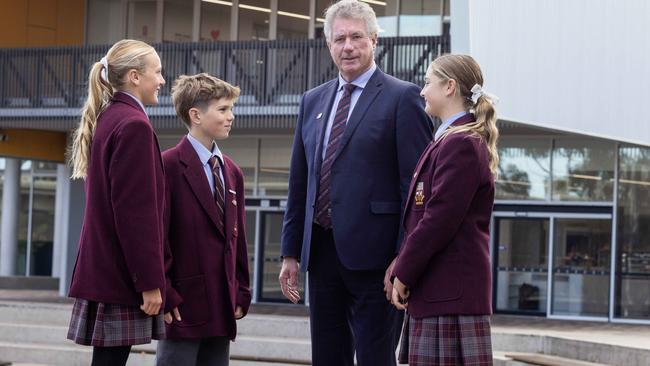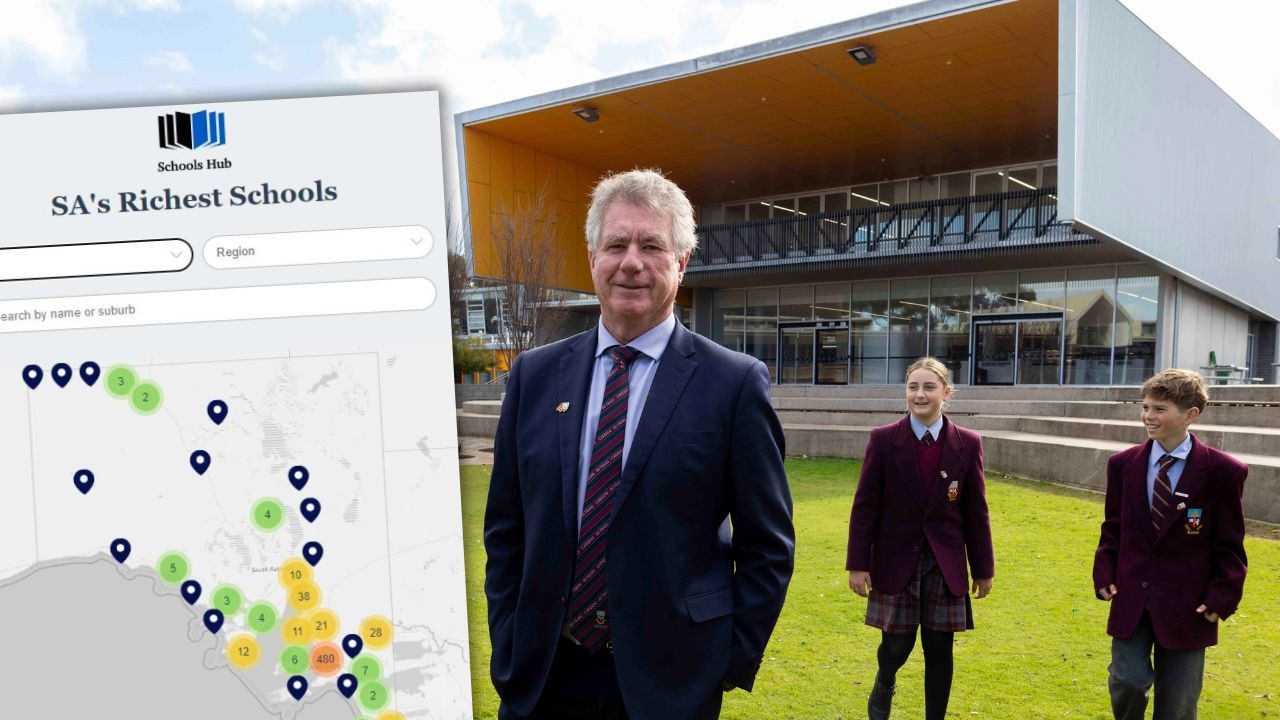South Australia’s richest and poorest schools according to latest MySchool data
The state’s wealthiest colleges are raking almost 100 times more than some cash-strapped small schools, new data reveals. Search the list.
Schools Hub
Don't miss out on the headlines from Schools Hub. Followed categories will be added to My News.
A wealthy inner-city college has raked in more than a quarter of a billion dollars in recent years, eclipsing the funds flowing to the state’s smallest schools, new data reveals.
St Peter’s College, which charges $31,190 for Year 12 tuition, is the only school to boast a five-year gross income of more than $250m.
The all-boys school on the edge of Adelaide’s CBD, which had more than 1500 students last year, raked in $253.7m between 2018 and 2022.
Analysis of school financial records from the MySchool website has revealed huge disparities in school coffers across the state.
The records include all fees, charges and parental contributions, as well as state and federal government funding and any other private sources.
The analysis covers schools in the public, independent and Catholic sectors.
After St Peter’s, the next-richest institution was Pembroke School ($245.2m) in Kensington Park, followed by Sacred Heart College ($200.6m) in Somerton Park.
Analysis of income schools received in 2022 also reveals which spent the most per student.
Prince Alfred College, in Kent Town, tops that list collecting $38,846 for each of its 1150-odd pupils.
Among the state’s richest 20 schools are four large public campuses including Roma Mitchell Secondary College, at Gepps Cross, which accrued the most total income and the most per student following an 18 per cent increase in enrolments between 2018 and 2022.
It collected $24,783 for each of its about 1500 students in 2022.
Over the five-year period it took in almost $161.7m.
INTERACTIVE: INSIDE SA SCHOOLS’ $12BN REAL ESTATE EMPIRE

Of the top 20 schools, Cardijn College, at Noarlunga Downs, saw the largest increase in income over time, up 80 per cent from 2018 to 2022 for a total of more than $142m across the period.
The growth in income at Cardijn College comes as the school’s enrolments ballooned from about 1000 in 2018 to about 1500 in 2022.
Cardijn principal Steve Byrne said the school was a popular choice in the southern suburbs.
“We live in a country where parents have a choice and at the moment quite a lot of them are choosing us,” Mr Byrne said.
The school receives additional funding for its students with complex needs, which makes up 40 per cent of its cohort.
The average portion of students with complex needs at other Catholic schools is about 20 per cent.
Mr Byrne said the school’s unit for students with intellectual disabilities is “bursting with demand” in addition to the growth in its overall population.
In 2018, the Marian campus at Noarlunga Downs amalgamated with the Marcellin Technical College at Christies Beach.
The following year, more than 200 Year 7 students arrived as they joined secondary school.
By 2022, the Marian campus had more than 1300 enrolments, with the technical college at about 200 and in 2024, the college has more than 2000 students across its campuses.
RANKED: SA’S RISING BOARDING SCHOOL FEES REVEALED

Cardijn College “absolutely” has plans for further expansion to meet demand, funded partially by its increase in income.
“That will be about making sure that campuses are structured in a way to cope with that (growth),” Mr Byrne said.
“We’re predicting enrolment will still continue to grow and it’s a fairly attractive option in the local area.”
Mr Byrne said “in time” the college would build a senior campus at Noarlunga for Year 11 and 12 students.
Two of the richest 20 schools experienced a decline in their income over the same period as Sacred Heart College’s total dropped just over one per cent and Mercedes College saw a dip of almost four per cent.
All 20 schools with the lowest income were regional or remote government schools including Port Neill and Booborowie primary schools.
The analysis did not include any deductions for capital works or debt servicing.
It did not cover special schools or schools that did not have complete financial data on the MySchool website for one or more of the five years.
Catholic Education South Australia director Dr Neil McGoran said the lowest funded non-government school receives “only 20 per cent of the cost of education from the government”.
“To fill the gap in funding, schools charge fees – which of course will vary depending on how much funding the school receives,” Dr McGoran said.
An Association of Independent Schools of SA spokeswoman said the sector experienced “strong enrolment growth” from 2018 to 2023 and now educates almost one in five students in SA.

The latest publicly available data revealed independent school parents and its community contributed more than $540m toward the cost of their children’s education.
They contribute to 43 per cent of their school’s income on average but “in some schools this contribution is significantly higher”, the spokeswoman said.
Education Minister Blair Boyer said his “singular focus” is bringing public schools to 100 per cent of the Schooling Resource Standard.
He said the current five per cent shortfall in funding, worth about $190m, “would go directly into school supports so that teachers have the time, resources and the support to help students achieve the best academic outcomes”.
The government announced a $250m commitment to build and upgrade school infrastructure in the recent state budget.





